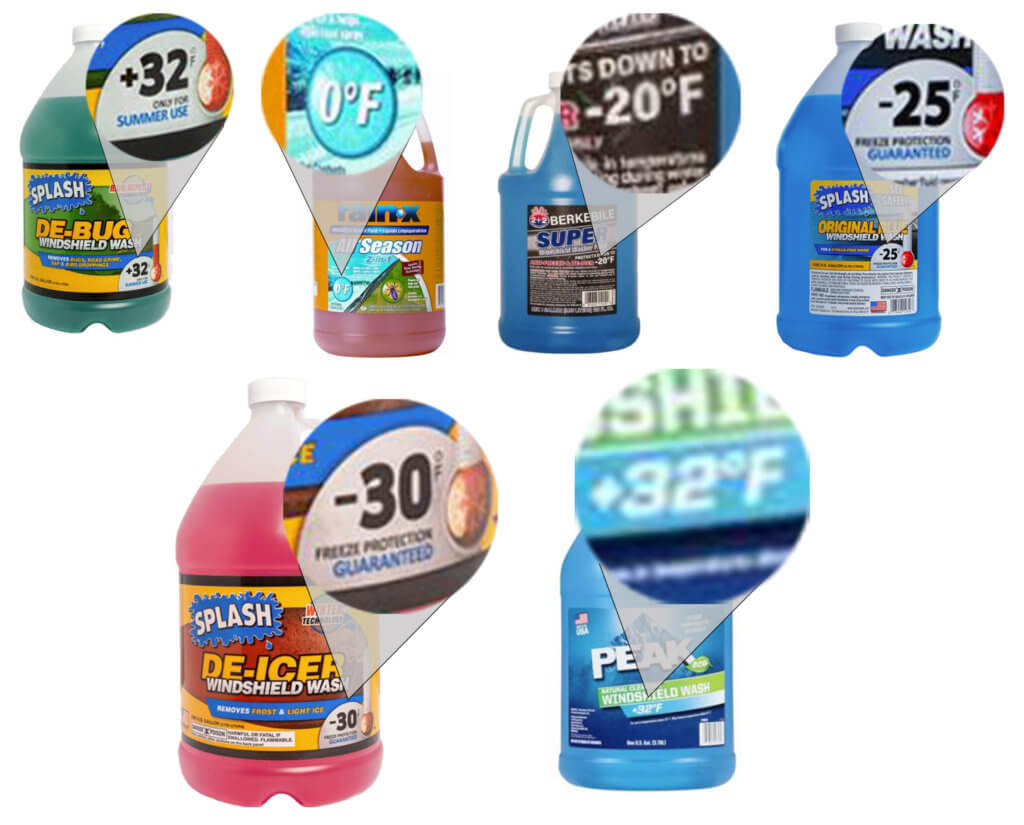Windshield washer not spraying
Learn how to fix your windshield washers when they’re clogged
If your windshield washers aren’t spraying start by listening for the sound of the washer pump. With the engine off, activate the windshield washer. If you hear the pump operate but the washer fluid is not spraying, you’ve automatically ruled out a bad pump, blown pump fuse, or a wiring harness/connector issue. The next most likely cause is a clogged sprayer jet. See this post for instructions on how to unclog a windshield washer jet.
However, if the pump doesn’t run and the windshield washer fluid is not spraying, you’ll have to check the reservoir to see if the washer fluid is frozen. Then check to see if the fuse is blown or the washer pump connector is corroded.
Most common causes for windshield washers not spraying
1) Washer fluid is frozen
2) Washer jets are clogged
3) Washer pump fuse is blown
4) Washer pump has failed or is frozen
Windshield washer fluid might be frozen
Run a flexible probe into the reservoir to see if the fluid is frozen. The reservoir is usually made from translucent material, so you can watch the probe enter the fluid area. If the probe stops before reading the bottom of the reservoir, the fluid is probably frozen. Refer to the following section on how to unfreeze frozen washer fluid
Unfreeze frozen washer fluid by removing the reservoir
Some washer fluid reservoirs sit in the open in the engine compartment. They’re held in place with just a few bolts. If yours is easy to remove, simply remove the electrical connector to the washer pump and disconnect the rubber tubing running to the wiper spray jets. Take the reservoir indoors and let it thaw.
Other reservoirs are harder to remove because they’re mounted in the fender. To remove those you have to remove the wheel well liner. If that’s too big of a job, try thawing the fluid while the reservoir si still in the vehicle. Here’s how.
Unfreeze frozen washer fluid using a water/alcohol mix and a hairdryer
Purchase a quart of 91% isopropyl alcohol from a drug store. Mix one-quart alcohol with a pint of hot tap water. Pour it into the washer fluid reservoir. Then use a hairdryer to warm the reservoir. The alcohol/water mix will immediately start thawing the frozen washer fluid at the top of the reservoir and the alcohol will prevent the fluid from re-freezing (the freezing point of 91% alcohol is -128°F). Use a flexible probe to stir the fluid while you heat the reservoir with a hairdryer.
A burned-out washer pump motor may be the cause of windshield washer not spraying.
You can burn out a washer pump by trying to operate it when frozen. When frozen, the impeller won’t move, stalling the motor and causing the fuse to blow. If you simply replace the fuse, it will just blow again. If you repeat this, you can permanently damage the washer pump motor windings. At that point, you’ll have to replace the pump. To test for a bad pump, disconnect the electrical connector from the washer pump motor. Using a multimeter set to DC volts, insert the red and black probes into the terminals of the connector. Have someone operate the washer switch. If you see 12-volts on the meter. The fuse, wiring harness, and connector are good, proving the pump is bad. Replace the pump.
Prevent washer fluid from freezing
Washer fluid is available in different concentrations that translate into different freezing points. The cheapest washer fluid usually protects against freezing down to -20°F, while the more costly fluids protect down to -40°F or even -50°F. Most fluids contain water, detergent, and methanol alcohol. Don’t make the mistake of leaving summer fluid in the reservoir as you approach winter. You can “doctor” inexpensive washer fluid and increase its freeze protection by adding 91% isopropyl alcohol to the pre-mixed solution. But it’s probably cheaper to buy the correct freeze protection mix in the first place.

All windshield washer fluid bottles contain a freeze protection rating. Make sure you buy the correct fluid for your cold zone.
©, 2021 Rick Muscoplat
Posted on by Rick Muscoplat